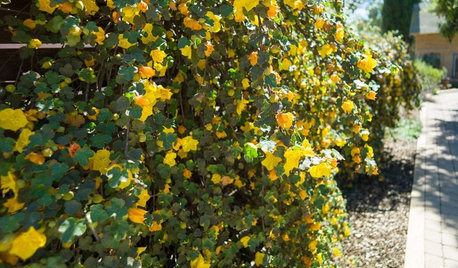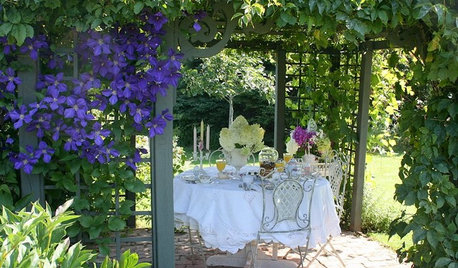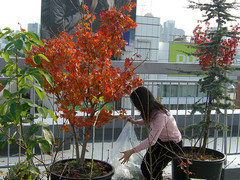Why root-prune when you repot?
tapla (mid-Michigan, USDA z5b-6a)
18 years ago
Featured Answer
Sort by:Oldest
Comments (27)
xman
18 years agolast modified: 9 years agomjh1676
18 years agolast modified: 9 years agoRelated Professionals
Oconomowoc Landscape Architects & Landscape Designers · Roosevelt Landscape Architects & Landscape Designers · Waterbury Landscape Contractors · Byram Landscape Contractors · Coram Landscape Contractors · Fort Mill Landscape Contractors · New Cassel Landscape Contractors · Pompano Beach Landscape Contractors · Baltimore Fence Contractors · Long Beach Fence Contractors · Mill Valley Fence Contractors · Oak Creek Fence Contractors · Piedmont Fence Contractors · Saint Louis Park Fence Contractors · Sun City Fence ContractorsEmbothrium
18 years agolast modified: 9 years agoschusch
18 years agolast modified: 9 years agotapla (mid-Michigan, USDA z5b-6a)
18 years agolast modified: 9 years agoEmbothrium
18 years agolast modified: 9 years agotapla (mid-Michigan, USDA z5b-6a)
18 years agolast modified: 9 years agotapla (mid-Michigan, USDA z5b-6a)
18 years agolast modified: 9 years agoradagast
18 years agolast modified: 9 years agoron48
18 years agolast modified: 9 years agotapla (mid-Michigan, USDA z5b-6a)
18 years agolast modified: 9 years agogardengal48 (PNW Z8/9)
15 years agolast modified: 9 years agobotann
15 years agolast modified: 9 years agotapla (mid-Michigan, USDA z5b-6a)
15 years agolast modified: 9 years agogardengal48 (PNW Z8/9)
15 years agolast modified: 9 years agotapla (mid-Michigan, USDA z5b-6a)
15 years agolast modified: 9 years agogomero
15 years agolast modified: 9 years agotapla (mid-Michigan, USDA z5b-6a)
15 years agolast modified: 9 years agobotann
15 years agolast modified: 9 years agogardengal48 (PNW Z8/9)
15 years agolast modified: 9 years agorooftop_rose
15 years agolast modified: 9 years agotapla (mid-Michigan, USDA z5b-6a)
15 years agolast modified: 9 years agogomero
15 years agolast modified: 9 years agorooftop_rose
15 years agolast modified: 9 years agoe-w-031
10 years agolast modified: 9 years agotapla (mid-Michigan, USDA z5b-6a)
10 years agolast modified: 9 years ago
Related Stories

GARDENING GUIDESGot Frost-Damaged Plants? How It Happens, and When and How to Prune
Crispy brown leaves are a sure sign that Jack Frost has been to your neighborhood
Full Story
GARDENING GUIDESTidy Up Sprawling Native Shrubs With These Pruning Tips
Sound horticultural pruning methods work for native and nonnative plants alike
Full Story
WINTER GARDENINGPruning Secrets for Exquisite Roses
Encourage gorgeous blooms year after year with this time-tested advice on how to prune your rosebush in winter for health and shape
Full Story
ARTThe Beauty of Bonsai — Living Art, Rooted in Harmony
Create your own emblem of nature's balance with an art form dating back 1,000 years
Full Story
Rooting for Indoor Trees
Houseplants tend to get all the glory indoors, but trees deserve their place in the sun — and in your living room, your entryway, your ...
Full Story
FEEL-GOOD HOMERejuvenate Your Home With Deep-Rooted Traditions
Give the subtle energies and spiritual side of your home some attention, and watch newfound calm and beauty blossom
Full Story
GARDENING GUIDESWhen and How to Plant a Tree, and Why You Should
Trees add beauty while benefiting the environment. Learn the right way to plant one
Full Story
CONTAINER GARDENSContainer Garden Basics: How and When to Water Potted Plants
Confused about soil moisture, the best time to water and what watering device to use? This guide can help
Full Story
HOUSEPLANTS8 Essentials for Healthy Indoor Plants
Houseplants add so much to our homes — and can thrive when grown in the right conditions. Keep these tips in mind
Full Story
GARDENING GUIDESPacific Northwest Gardener: What to Do in May
Take advantage of May's warmth to prune spring blooms and plant vegetables and annuals for a summer bounty
Full StorySponsored
More Discussions








tapla (mid-Michigan, USDA z5b-6a)Original Author